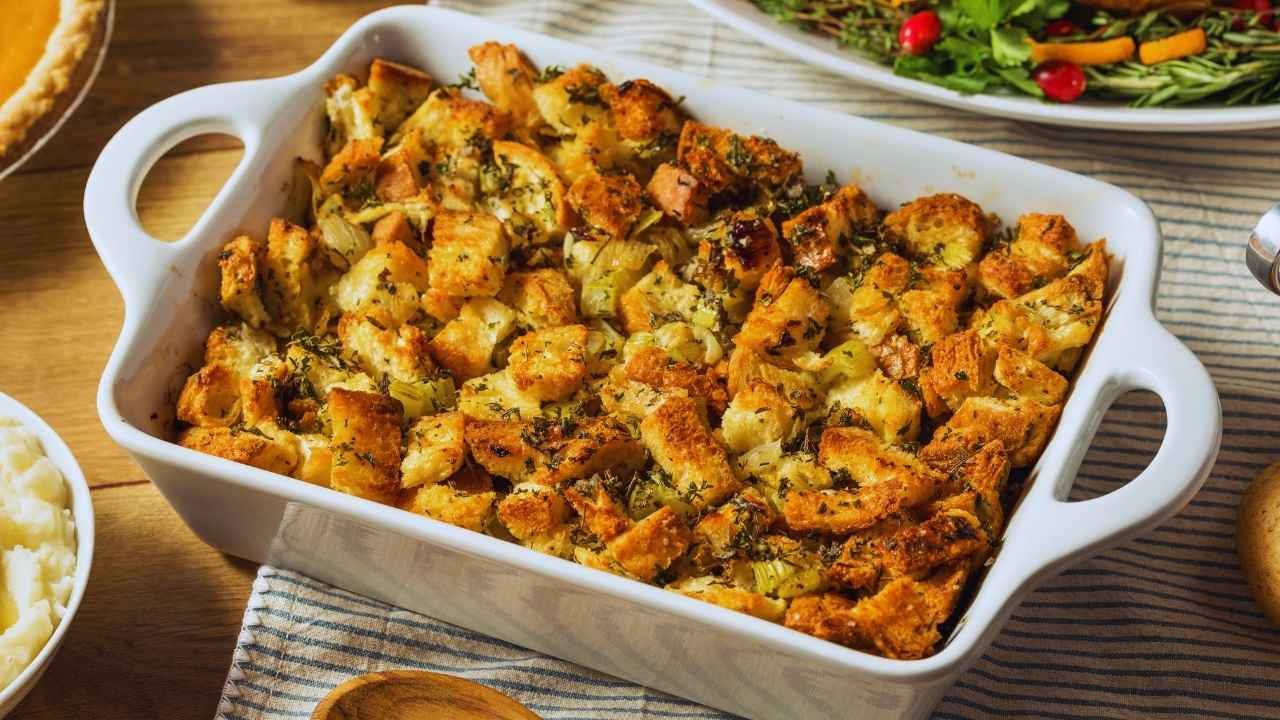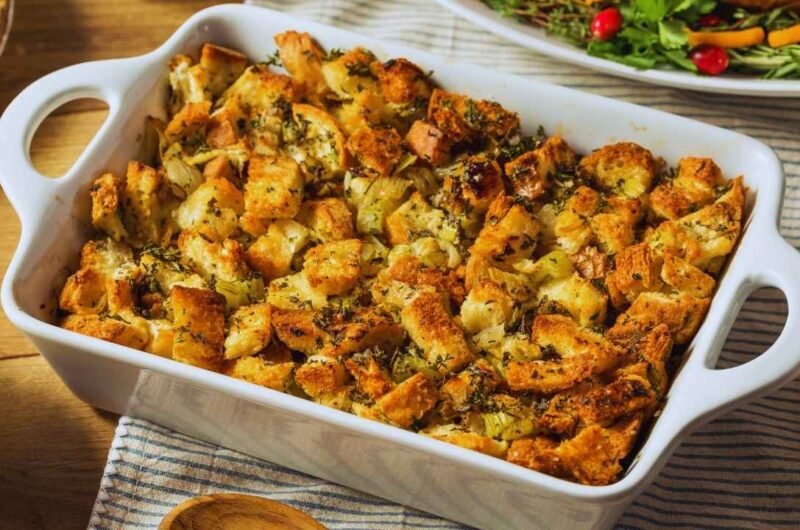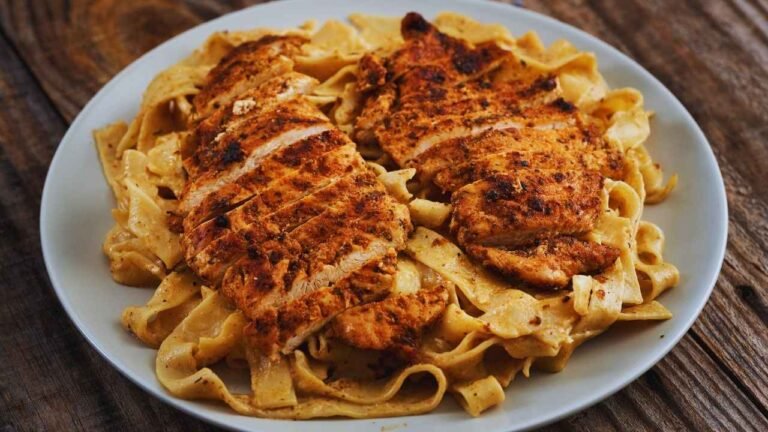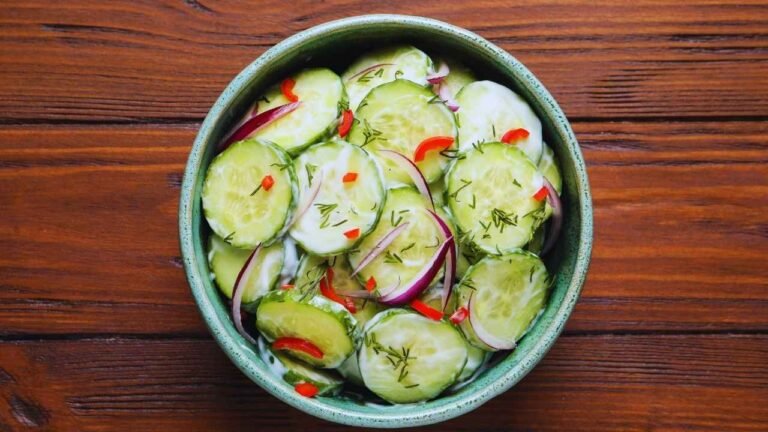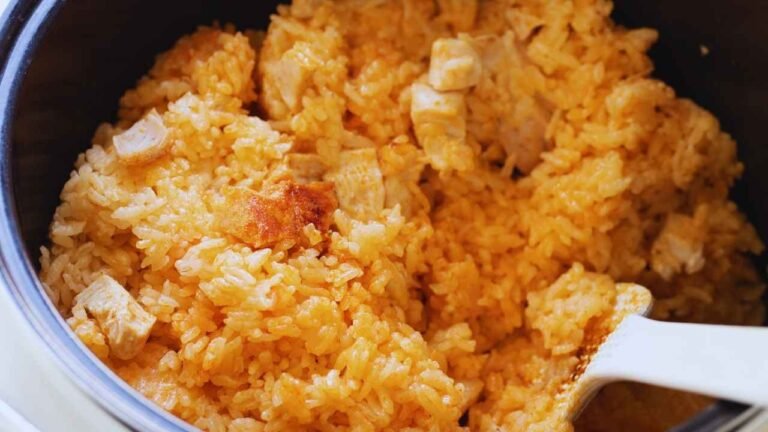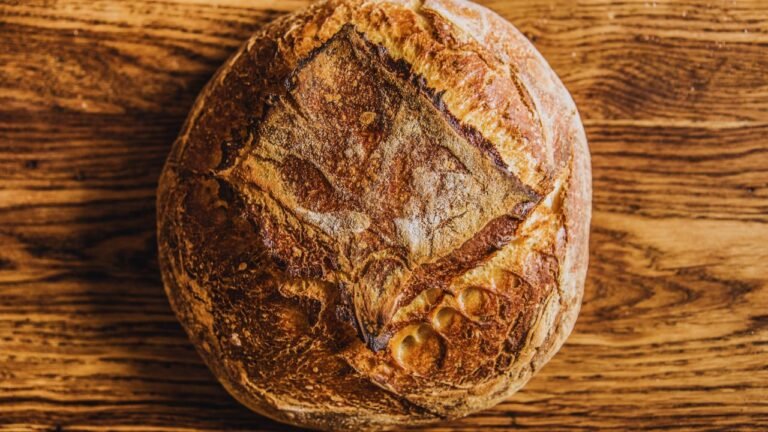How to Make the Best Thanksgiving Stuffing and Dressing Recipes
Thanksgiving stuffing ranks among the most cherished side dishes at any holiday table. Many home cooks struggle to strike that perfect balance of flavors and textures in their stuffing. The best stuffing and dressing recipes blend carefully chosen ingredients with proven techniques that complement the turkey and create lasting memories.
Our detailed guide explains everything in homemade stuffing preparation. You’ll learn to select the right bread and become skilled at combining herbs perfectly. The guide covers proven methods to achieve ideal texture and highlights differences between cooking stuffing inside versus outside the bird. You’ll also find practical make-ahead tips to reduce holiday stress. These battle-tested techniques help both new cooks and seasoned hosts create memorable dishes.
Choosing the Right Bread for Your Stuffing
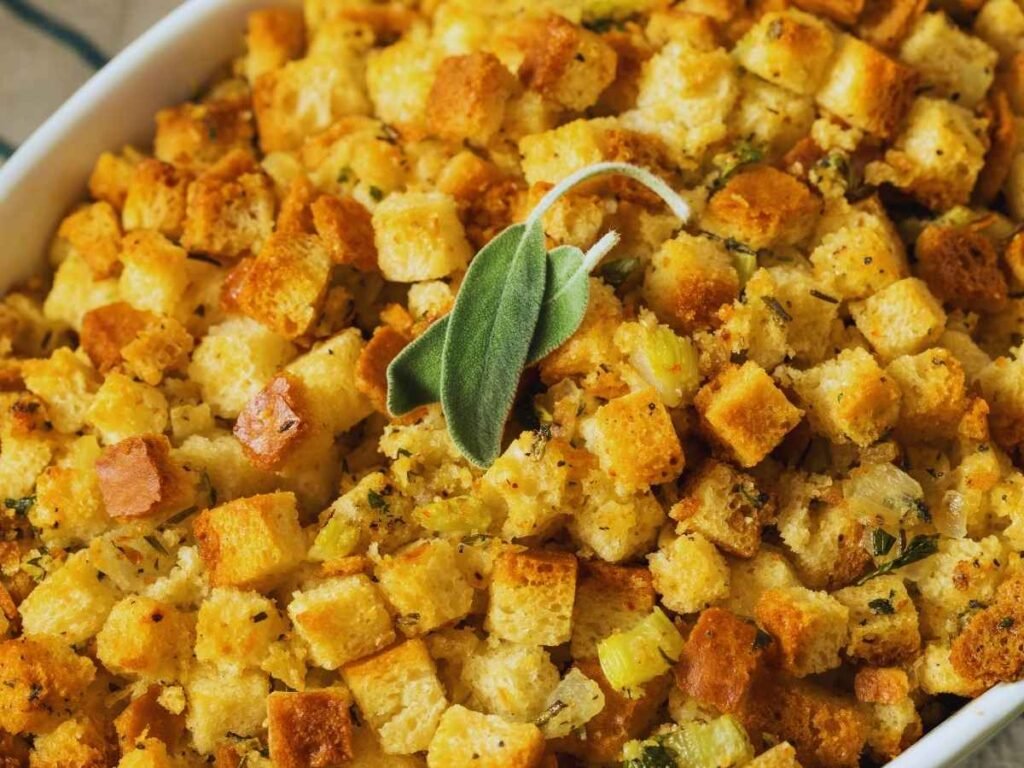
Great homemade stuffing starts with choosing the right bread and preparing it well. Many home cooks grab whatever bread they find, but their choice affects the stuffing’s final texture and taste. This classic Thanksgiving dish deserves careful attention to its most basic ingredient.
Types of bread to use
White sandwich bread of high quality remains the best choice to make traditional thanksgiving stuffing. Its excellent absorption of liquid and neutral flavor lets other ingredients take center stage. The rich, eggy texture of challah and brioche creates a more luxurious stuffing, though some people might find them overwhelming. Several bread varieties provide unique characteristics that you might want to consider:
Bread Type Characteristics Best Used For Cuban Bread Soft interior, mild nutty taste Traditional savory stuffing Cornbread Natural sweetness, moisture-retaining Southern-style dressing Ciabatta Sturdy texture, good absorption Rustic stuffing variations Hawaiian Bread Soft texture, subtle sweetness Fruit-based stuffing Drying and toasting techniques
Perfect stuffing needs completely dried bread. The quickest way to dry bread is in the oven, which works better than waiting for it to go stale naturally. Here’s how you can do it:
- Heat your oven to its lowest setting (150°-200°F)
- Cut the bread into ½-inch cubes
- Place these cubes on baking sheets with cooling racks
- Let them dry for 45-60 minutes until they have no moisture left
Your air fryer can save the day when time or oven space is limited. Just set it to 300°F and dry the bread cubes for 5-10 minutes. Remember to toss them often so they dry evenly. You can prepare the dried bread up to three days before Thanksgiving and store it in an airtight container.
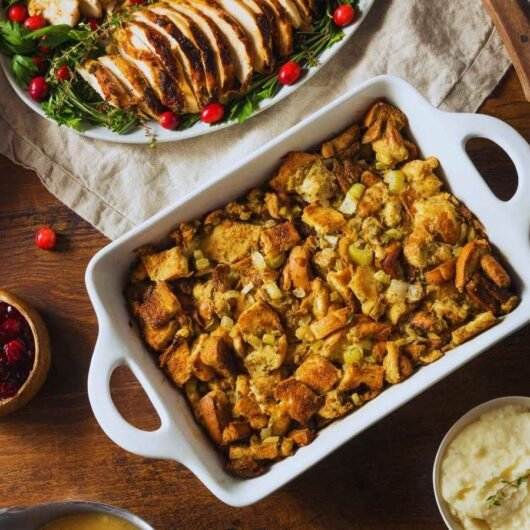
Bread-to-liquid ratio
The right amount of liquid to bread varies based on your bread choice and the texture you want. A typical recipe needs about 10 cups of bread cubes from a one-pound loaf. This amount fits perfectly in a 9×13-inch baking dish and serves 10-12 people. The liquid quantity needs adjustment based on these key factors:
- Your bread’s density and moisture level
- How much moisture comes from other ingredients like vegetables or fruits
- The texture you’re aiming for (more liquid creates a pudding-like dish, less makes it crumbly)
Most recipes work well when you start with 2-2.3 cups of stock to 9 cups of dried bread cubes. You can adjust this ratio based on your other ingredients and how you want the final dish to turn out.
Essential Herbs and Seasonings for Flavorful Stuffing
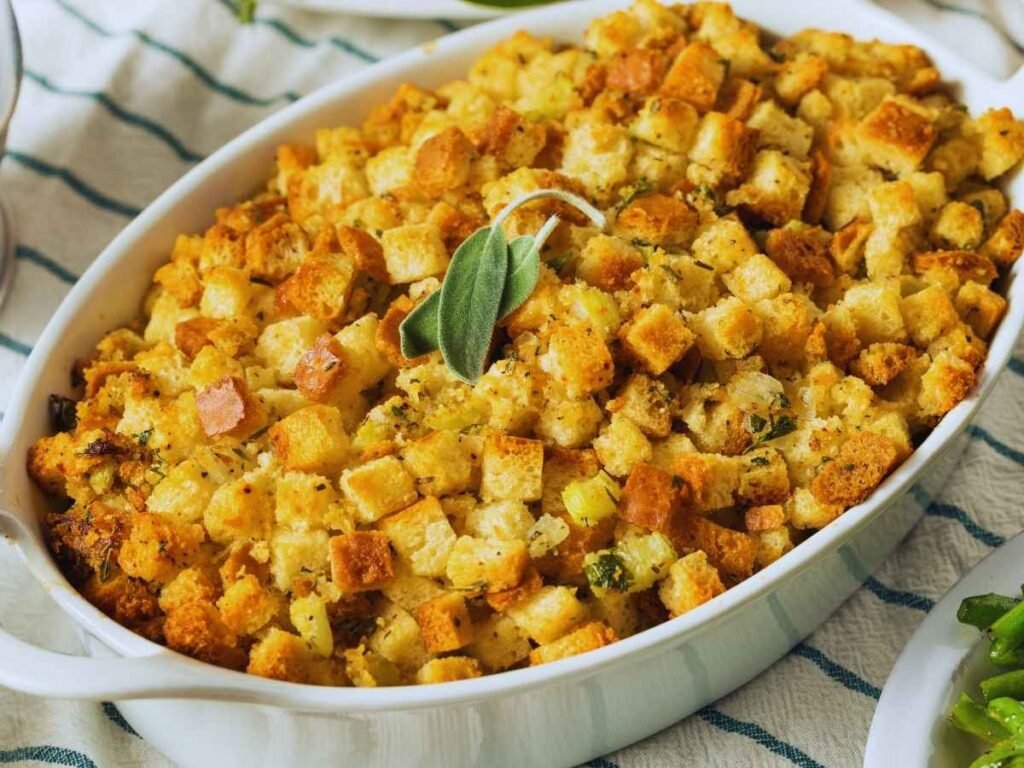
A skillful blend of herbs and seasonings makes ordinary bread into a memorable Thanksgiving stuffing that engages both nose and palate. The art of blending and balancing these aromatic ingredients will give a dish that honors tradition and delights modern tastes.
Classic herb combinations
Traditional stuffing builds on what cooks playfully call the “Simon and Garfunkel” herbs: parsley, sage, rosemary, and thyme. These herbs blend together harmoniously, and each one adds its distinct character to the mix:
Herb Fresh Amount Dried Equivalent Flavor Profile Parsley 1/3 cup 2 tablespoons Fresh, bright Sage 1/4 cup 1 teaspoon Earthy, pungent Rosemary 1 tablespoon 1 teaspoon Pine-like, aromatic Thyme 1 tablespoon 1 teaspoon Subtle, woody Poultry seasoning provides a convenient pre-blended option that captures these classic flavors. It typically combines sage, thyme, rosemary, and marjoram in perfect proportions.
Seasoning tips
The right technique and timing make herb integration a soaring win. Professional chefs recommend everything in these practices:
- Fine chopping distributes fresh herbs’ flavor evenly and prevents overwhelming leaf pieces
- Woody herbs like rosemary need cooking with aromatics (onions and celery) which releases their oils
- Delicate herbs like parsley maintain their fresh flavor with late addition to the cooking process
- A simple rule works with dried herbs – use one-third of the fresh herb amount the recipe specifies
Balancing flavors
The perfect flavor profile in stuffing emerges from understanding how different taste elements work together. Salt acts as the life-blood that enhances other flavors and creates harmony between sweet and savory notes. A successful stuffing depends on balancing these essential elements:
Sweet Elements: Vegetables like onions and celery naturally provide a subtle foundation that complements earthier herbs.
Savory Components: A combination of herbs and seasonings adds depth to the dish. Butter’s richness helps carry these flavors throughout.
Aromatic Base: Sautéed onions, celery, and garlic blend together to create a flavor platform that supports the herb mixture’s complexity without overpowering it.
The herbs will continue to release flavor during the cooking process. A conservative initial amount allows you to adjust as the dish develops. The stuffing’s seasoning should be tested before cooking, as the flavors become more intense during baking.
Cooking Methods: In the Bird vs. In a Dish
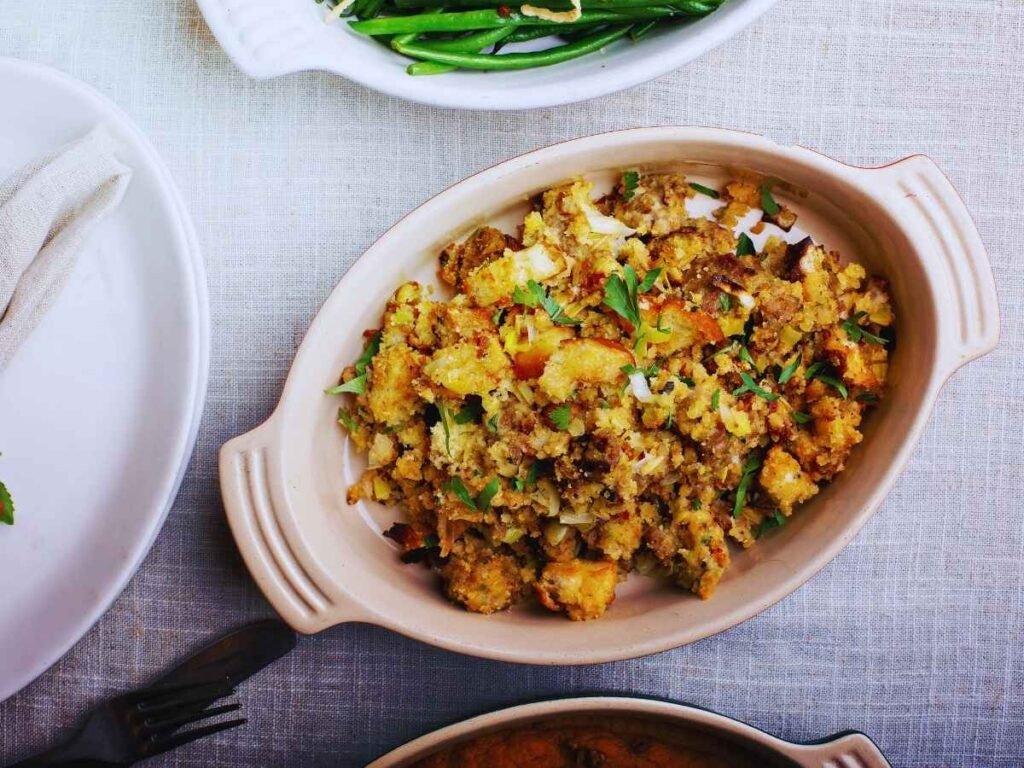
Thanksgiving stuffing preparation sparks heated debates about cooking methods. The choice comes down to stuffing the turkey or using a separate casserole dish. This significant decision affects the stuffing’s taste and determines both cooking duration and safety measures.
Pros and cons of each method
Different cooking methods come with their own unique benefits and challenges:
Method Advantages Disadvantages In the Bird • Absorbs turkey’s juices and flavors
• Traditional approach
• Moist, flavorful result • Longer cooking time
• Safety concerns
• Limited quantity possible Separate Dish • More consistent cooking
• Better portion control
• Crispy top texture • Less turkey flavor
• Needs extra moisture
• May dry out more easily Food safety considerations
Food safety emerges as the main goal in selecting a cooking method. The USDA highlights these essential points:
- The internal temperature of stuffing must reach 165°F whatever cooking method you choose
- You should prepare stuffing right before cooking
- Never stuff a turkey in advance
- Take the stuffing out of the bird right after cooking
Stuffing inside the turkey works like an insulator. This means your turkey needs more time to cook properly. The meat can end up overcooked, especially the breast, as you try to heat the stuffing to safe temperatures.
Achieving the perfect texture
The ideal texture comes from paying close attention to moisture levels and cooking techniques. Inside-bird cooking lets stuffing naturally absorb juices during roasting. Separate-dish preparation needs extra liquid to match these moisture levels.
Here’s the quickest way to get optimal texture when cooking in a separate dish:
- Add warm stock gradually, allowing bread to absorb liquid evenly
- Cover the dish with foil for the first portion of baking
- Remove foil during final cooking to develop a crispy top
- Drizzle with additional warm stock if needed during cooking
Professional chefs suggest placing turkey wings or necks on top of the casserole while baking if you cook stuffing separately. This approach gives traditional turkey flavor and helps you retain control over food safety standards. The stuffing needs an oven temperature no lower than 325°F, and you should monitor internal temperature with a reliable food thermometer.
Separate baking takes 45-60 minutes, which is nowhere near as long as in-bird preparation. This shorter time gives better control over both stuffing texture and turkey doneness. Many home cooks and professional chefs now prefer this method.
The stuffing mixture should stay moist but not soggy before cooking with either method. This consistency will give a proper heat distribution and the right balance between tenderness and structure. Note that you can adjust moisture levels during cooking, but starting with the right consistency is a vital step toward success.
Make-Ahead and Storage Tips for Thanksgiving Stuffing
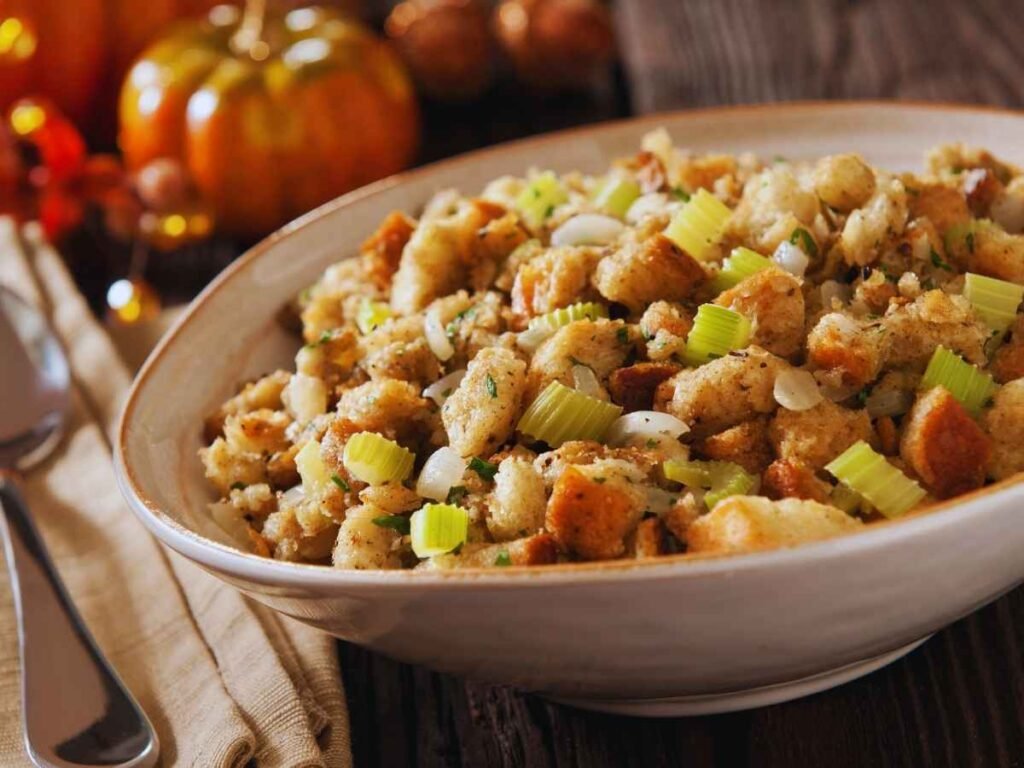
You can substantially reduce your Thanksgiving Day stress with smart planning and proper storage techniques that ensure delicious homemade stuffing. The host’s ability to understand make-ahead options and storage methods helps them focus on the celebration’s other aspects while food safety and quality remain intact.
Preparing components in advance
A stress-free Thanksgiving stuffing starts with advance preparation. The core team of home chefs can complete several steps days before the big day:
Component Prep Time Storage Method Maximum Storage Dried Bread Cubes 3-4 days ahead Airtight container 1 week Chopped Vegetables 2 days ahead Sealed container 48 hours Herb Mixture 1 day ahead Plastic wrap 24 hours Assembled Stuffing 1 day ahead Covered baking dish 24 hours The quickest way to achieve perfect results requires a two-step baking process. Start by baking the covered dish until it cooks through and refrigerate it. The final step happens on Thanksgiving Day – bake the stuffing uncovered while the turkey rests to create that irresistibly crispy top.
Freezing and reheating instructions
Your stuffing will retain its delicious flavor and texture when you freeze it correctly. You can freeze both cooked and uncooked stuffing with these specific methods:
Freezing Uncooked Stuffing:
- Follow your recipe to prepare the stuffing
- Transfer it to a freezer-safe container
- Push out all excess air
- Write the date on the container
- Keep it at 0°F or below
- The stuffing stays fresh up to 3 months
Reheating Instructions:
- Let cooked stuffing thaw in your refrigerator overnight
- Put the stuffing in an oven-safe dish
- Mix in 2-3 tablespoons of broth for each cup of stuffing
- Cover the dish with foil
- Bake at 350°F until it reaches 165°F inside
- Take off the foil and bake 15 more minutes for a crispy top
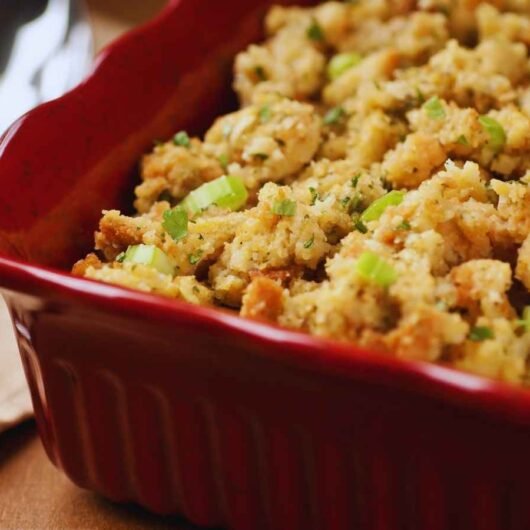
Leftover ideas
Your Thanksgiving stuffing can become exciting new dishes that your family will be happy to eat. Here’s what professional chefs suggest you try:
Quick Transformations:
- Stuffing Waffles: Press into waffle iron until crispy
- Breakfast Cups: Add eggs and bake in muffin tins
- Stuffed Mushrooms: Fill portobello caps with mixture
- Crispy Cakes: Form into patties and pan-fry
Stuffing works great as a base for bigger meals. You can create tasty casseroles by layering it with leftover turkey, vegetables, and gravy. These dishes stay good in the fridge for 4 days or in the freezer for 3 months.
The right moisture level makes all the difference in make-ahead stuffing. Professional chefs add broth in two steps to get the perfect texture. They mix in the original amount during preparation and add more right before the final bake. This method prevents the stuffing from getting soggy.
Safety comes first with leftovers. Store your stuffing in shallow containers and refrigerate it right away so it cools quickly. Heat it thoroughly to 165°F in the middle and check with a food thermometer. While stuffing lasts four days in the fridge, it tastes best within two days.
Conclusion
Making perfect Thanksgiving stuffing needs the right ingredients and precise execution. Quality bread forms the base, and chosen herbs with proper moisture control create the ideal texture and flavor. Food safety matters most when you cook inside the turkey or separately. Temperature checks and timing ensure tasty results and keep guests safe.
A well-made stuffing gives cooks more than just a delicious side dish. Smart planning and storage methods help turn this holiday classic from a stressful task into a chance for kitchen creativity. These proven approaches let both new and skilled cooks make stuffing that stays true to tradition and meets today’s cooking demands.
How to Make the Best Thanksgiving Stuffing and Dressing Recipes
Course: DinnerCuisine: AmericanDifficulty: Easy12
servings20
minutes45
minutes300
kcalThis Thanksgiving Stuffing recipe features a perfect blend of toasted bread, aromatic herbs, and sautéed vegetables, all soaked in flavorful broth for a savory, moist dish with a crispy top. Easy to prepare and bake, it’s a classic side that complements turkey and can be made ahead to reduce holiday stress.
Ingredients
1 loaf white sandwich bread (or other bread)
1/2 cup butter
1 onion, chopped
2 celery stalks, chopped
3 garlic cloves, minced
2 tsp dried sage
1 tsp dried thyme
1/2 tsp dried rosemary
1/4 cup fresh parsley, chopped
4 cups broth (chicken or vegetable)
1/2 tsp salt
1/4 tsp pepper
2 large eggs, beaten
Directions
- Dry bread: Cube and dry bread at 200°F for 45-60 mins.
- Sauté veggies: Cook onions, celery, and garlic in butter, adding herbs.
- Combine: Mix bread, veggies, broth, and beaten eggs.
- Bake: Transfer to greased dish, bake at 350°F for 30-40 mins, uncover last 10-15 mins for crisp top.
- Serve: Let cool slightly and serve.
Recipe Video
Notes
- Make ahead and bake later.
Add fruit, sausage, or mushrooms for extra flavor.
FAQs
Is it possible to prepare Thanksgiving stuffing in advance?
The ingredients for your stuffing can indeed be prepared up to a few days ahead of time. Chopped vegetables may be kept for 48 hours, dried bread cubes for up to a week, and the combined stuffing can be made the day before cooking. To get a crispy top on Thanksgiving Day, just bake it uncovered.
Which bread works best for stuffing during Thanksgiving?
Because white sandwich bread has a neutral taste and absorbs liquid well, it is a typical option for traditional filling. For different textures and flavors, you can also use various breads, such as ciabatta, cornbread, or challah. Before using, make sure the bread is completely dry.
How can I reheat stuffing that I've frozen?
Yes, both cooked and uncooked stuffing may be frozen. Uncooked stuffing can be stored for up to three months in a freezer-safe container. Thaw overnight in the refrigerator, then bake in the oven with a little more broth to add moisture until the top is crispy and the temperature reaches 165°F.

